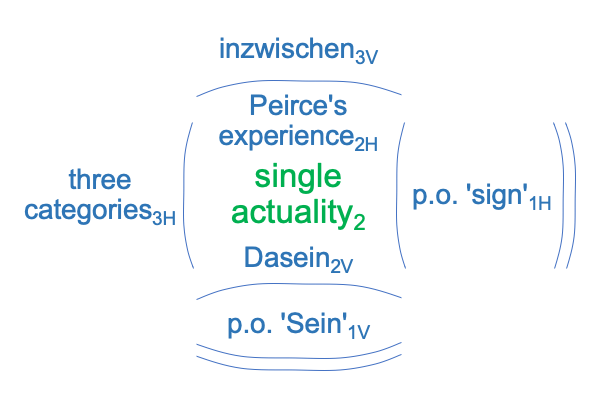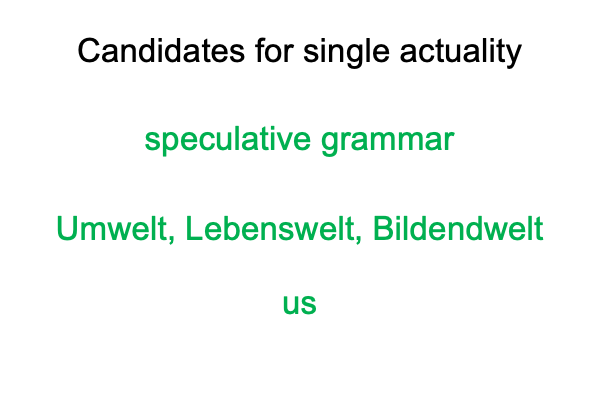Looking at Brian Kemple’s Book (2019) “The Intersection” (Part 1 of 4)
0001 According to Neoplatonic legend, the descent of the soul starts with a small immaterial gem resting on an undefinable pillow in the presence of transcendental beauty. Then, a trap door opens and the little source of illuminationbegins to fall. As it descends, it accrues matter. Matter enters form.
One may say that the matter is evil and the soul, good, and conclude that the immortal soul becomes encased in corruptible matter. But, the story is more complicated, because the term, “matter” slyly includes the capacity to become entangled with purely relational being. Matter holds the capacity for meaning. Matter substantiates form. So Christians, following the complication, witness the baby as bearing a message. The message? Baptize me.
0002 The book before me is Brian Kemple’s The Intersection of Semiotics and Phenomenology: Peirce and Heidegger in Dialogue, published in 2019 by Walter de Gruyter Press (Boston/Berlin). The masterwork is dedicated to the memory of John Deely (1942-2017 AD), who served as Kemple’s professor.
0003 The book presents a complex argument. I, a simpleton, fixate on the titular word, “intersection”.
For me, the term has a technical definition, as formulated in the chapter on message in the e-book How To Define The Word “Religion” (by Razie Mah, available at smashwords and other e-book venues). An intersection is a single actuality composed of two actualities, each with its own category-based nested form.
Say what?
See A Primer on the Category-based Nested Form.
0004 A photon is an example of an intersection of two actualities: a wave and a particle. The normal context of a diffraction apparatus3 brings wave properties of light2 into relation with the potential of ‘observations of wavelengths’1. The normal context of a metal plate3 brings particle properties of light2 into relation with potential ‘observations of the photo-electric effect’1.
0005 Here is a picture.

0006 Here is another way to look at the photon as intersection.

0007 In the following blogs, I will endeavor to visualize whether Kemple’s use of the term, “intersection”, coheres with this technical definition.
In order to do so, I will locate two category-based nested forms, one for both Peirce and one for Heidegger, and see whether the two actualities meld into one.


